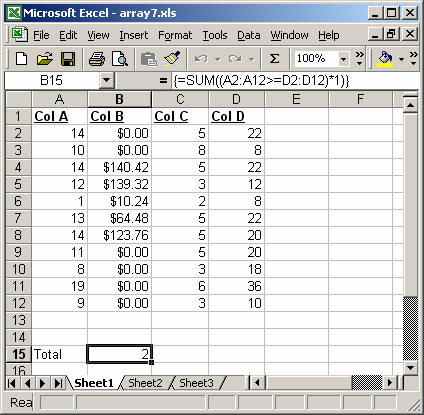
MS Excel 2003: Use an array formula to count the number of occurrences when the value in column A is greater than or equal to the value in column D
This Excel tutorial explains how to use an array formula to count the number of occurrences when the value in one column is greater than or equal to the value in another column in Excel 2003 and older versions (with screenshots and step-by-step instructions).
Question: In Microsoft Excel 2003/XP/2000/97, how do I count the number of occurrences where the value in column A is greater than or equal to the value in column D?
Answer: You can do this with an array formula.
Let's look at an example.

In cell B15, we want to count the number of occurrences where the value in column A is greater than or equal to the corresponding value in column D. To do this, we've created the following array formula that uses the SUM function:
=SUM((A2:A12>=D2:D12)*1)
When creating your array formula, you need to use Ctrl+Shift+Enter instead of Enter. This creates {} brackets around your formula as follows:
{=SUM((A2:A12>=D2:D12)*1)}
Advertisements


